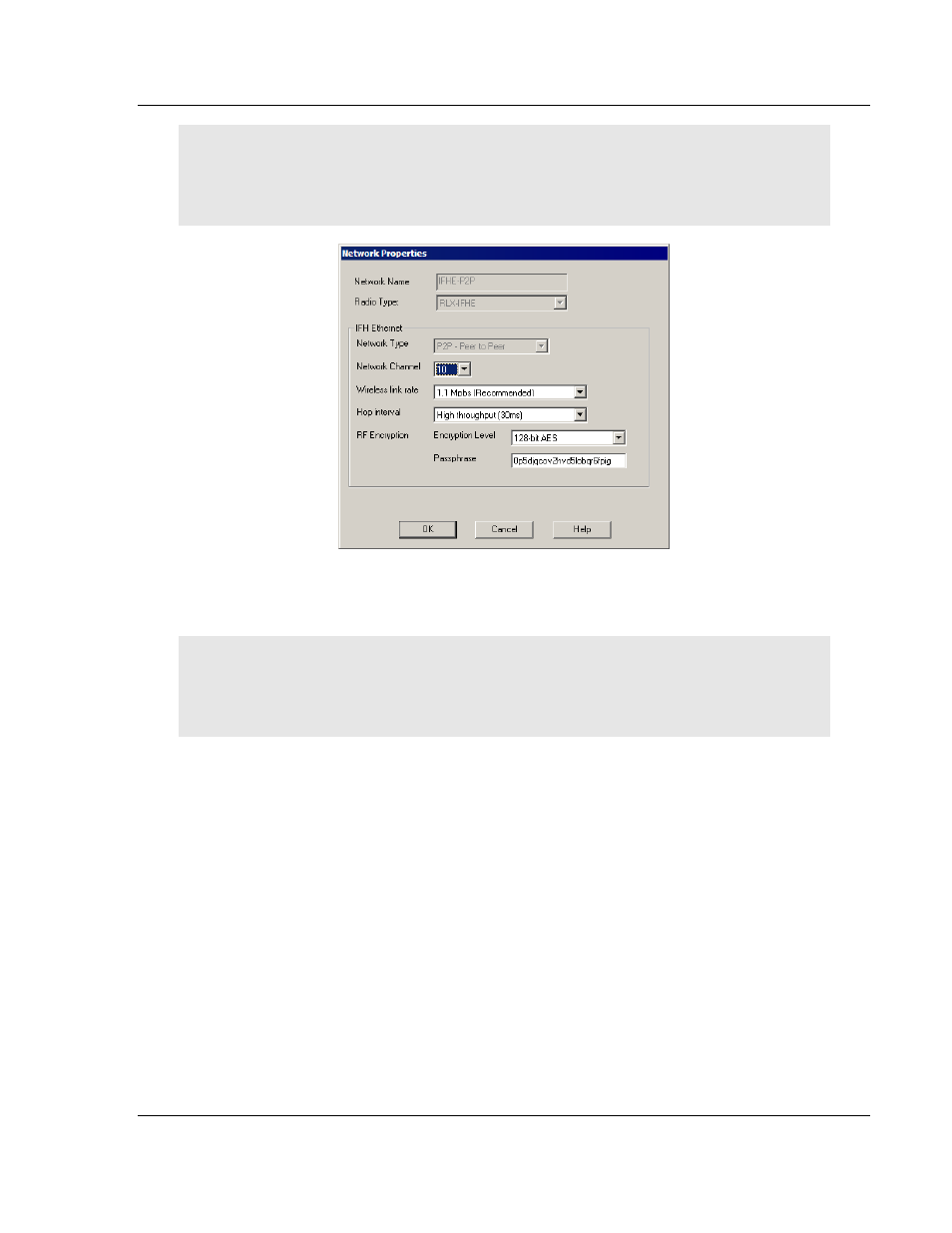ProSoft Technology RLX-IFH9E-A User Manual
Page 71

RLX-IFHE ♦ RadioLinx Industrial Wireless
Diagnostics and Troubleshooting
RadioLinx® Industrial Frequency Hopping Ethernet Radios
User Manual
ProSoft Technology, Inc.
Page 71 of 109
November 19, 2013
Important: The items on this dialog box depend on what type of radio you select.
The following example shows a network of RadioLinx IFHE (Industrial Frequency
Hopping Ethernet) radios. Refer to the user manual for your radio for an
explanation of each configuration item.
Select an unused Network Channel from the drop-down list.
Refer to the user manual for your radio for an explanation of other configuration
items on this dialog box.
Note: Some fields are "grayed-out" in this dialog box because these parameters
cannot be changed from here.
Note: See When to Re-Configure Radios (page 47) to ensure all radios will be
updated.
3.3.2 Viewing Radio Channel Noise Level
All radio networks experience background "noise", known as Electromagnetic
Interference (EMI), which consists of such things as stray signals from other
radios on the same frequency, or random interference generated by non-radio
devices that "leak" or emanate EMI as a by-product or side effect of their actual
function. There are also natural sources of EMI, including atmospheric
disturbances and sunspots. The "snow" on an unused or distant television
channel, or "static" on a car radio when passing under high voltage power lines,
are two common examples of background noise.
Unwanted noise, or EMI, on a data network can cause data transmission errors,
or stop a radio network from functioning at all. Most modern devices, including
RadioLinx radios, are designed to prevent unwanted emanation of EMI from the
device. Radios are also typically designed to tolerate a certain amount of
interference from other devices, however when the amount of noise reaches a
certain threshold, typically within 10dB of a link's RSSI, the radio may be unable
to distinguish between wanted and unwanted signals.